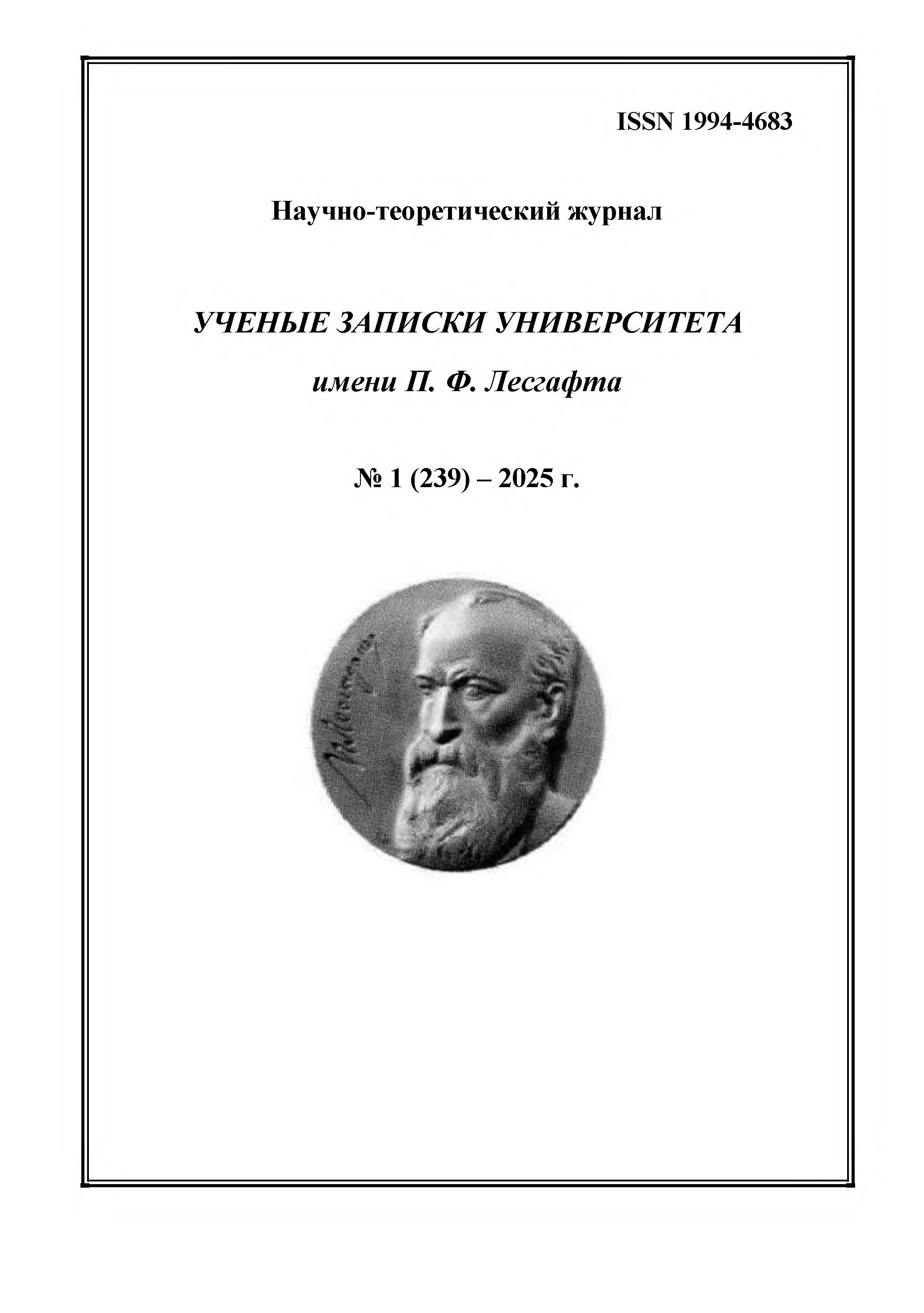graduate student from 01.01.2022 to 01.01.2025
Russian Federation
UDC 797.212.2
CSCSTI 77.29
The purpose of the study is to increase the speed of breaststroke swimming in athletes at the sports specialization stage by developing the explosive power of the lower limb muscles. Research methods and organization. Methods of analysis of scientific and methodological literature, pedagogical observation, pedagogical testing, pedagogical experimentation, and methods of statistical data processing were employed. The developed course was tested in the training process of 12-14-year-old breaststroke swimmers. Research results and conclusions. The study determined the degree of influence of the relationship between explosive power development and athletic performance, which is crucial for improving results in breaststroke swimming; the impact of strength training in the gym on the effectiveness of starts and swimming speed in breaststroke overall. It was demonstrated that the explosive power of the legs, primarily developed on land, significantly affects the results of 12-14-year-old breaststroke swimmers. The findings lead to the conclusion that it is beneficial to implement exercises aimed at developing explosive leg power, which contributes to improving athletic performance in breaststroke swimming.
swimming, breaststroke, youth sports, swimming technique, explosive power, strength training
1. Olkhovskaya O. G., Ponimasov O. E., Antonov A. V. (2019), “Structuring the amplitude-spatial characteristics of the swimming cycle of young rabbit swimmers”, Scientific Notes of P. F. Lesgaft University, No. 11 (177), pp. 325–328.
2. Ponimasov O. E. (2024), “Polyfunctionality of hydrogenous locomotion as motor substrates of applied swimming”, Theory and Practice of Physical Education, No. 4, pp. 3–5.
3. Barchenko S. A., Olkhovskaya O. G., Ponimasov O. E. (2019), “Management of time parameters of the structural cycle of swimming at the basic stage of training”, Scientific notes of P. F. Lesgaft University, No. 10 (176), pp. 25–28.
4. Ponimasov O. E., Saburova E. V., Maltsev D. V. (2021), “Formation of initial swimming skills taking into account the characteristics of primary school children”, Scientific Notes of the Lesgaft University, No. 9 (199), pp. 218–220.
5. Bolotin A. E., Ponimasov O. E., Prigoda K. G., Vasilyeva E. A. (2023), “Factors influencing the efficiency of the start in breaststroke swimming”, Theory and practice of physical education, No. 8, pp. 86–88.
6. Petrenko M. Ya., Aralov V. I. (2022), “Instrumental methods for analyzing swimming technique”, Physical Education and Health, No. 4 (84), pp. 176–179.
7. Solomatin V. R. (2010), “Individualization criteria and construction of long-term training in competitive swimming”, Moscow, 49 p.
8. Ponimasov O. E. (2020), “Didactic foundations of multifunctional teaching of applied swimming”, diss. … Doctor of Pedagogical Sciences, 13.00.04, St. Petersburg, 46 p.
9. Cronin John B., Radnor John M. (2020), “Plyometric training for young athlete”, Strength and Conditioning for Young Athletes. Science and Application, ed. by Rhodri S. Lloyd, Jon L. Oliver, URL: https://www.routledge.com/Strength-and-Conditioning-for-Young-Athletes-Science-andApplication/Lloyd-Oliver/p/book/9780815361831.
10. Selkin F. E. (2022), “Development of a swimmer's explosive strength as a factor in start efficiency in sprint swimming”, Scientific Notes of Lesgaft University, No. 6 (208), pp. 335–338.
11. Bolotin A. E., Bakayev V., Ponimasov O. E., Vasilieva V. (2022), “Peculiarities of Respiratory Functions in Qualified Swimmers Exposed to Multidirectional Physical Loads”, Journal of Human Sport and Exercise, Vol. 17, No. 4, pp. 860–866.







